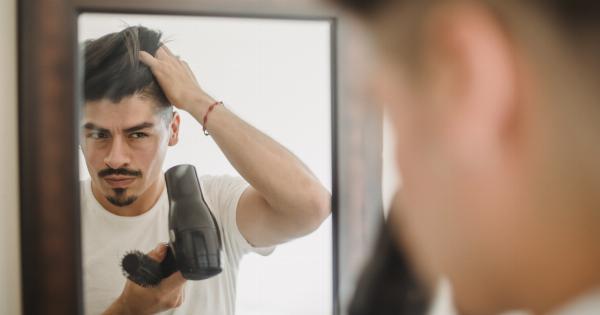For many women, hair loss can feel like a puzzle with no clear solution. Hair is often a symbol of femininity and beauty, so losing it can be a major blow to a woman’s self-esteem.
While some hair loss is normal – on average, women shed around 100 hairs a day – excessive hair loss can be a sign of a more serious issue. If you’re experiencing female hair loss, it’s worth investigating the potential underlying cause. Here are six factors that can contribute to the perfect storm of hair loss:.
Pregnancy and Hormonal Changes
Many women experience hair loss after pregnancy. During pregnancy, high levels of estrogen prolong the growing phase of hair, resulting in fuller, thicker locks. However, after giving birth, estrogen levels drop rapidly.
This can cause hair to enter the shedding phase all at once, leading to a noticeable loss of hair. Hormonal changes, such as those associated with menopause, can also contribute to hair loss. The drop in estrogen levels that occurs during menopause can lead to hair thinning, especially around the crown of the head.
Stress and Trauma
Stress can be a major contributor to hair loss. When the body is under stress, it produces the hormone cortisol, which can cause hair follicles to shrink and enter the shedding phase prematurely.
Stress-related hair loss is most commonly seen as an overall thinning of hair, rather than patchy bald spots. Traumatic events, such as surgery or a serious illness, can also cause hair loss. This type of hair loss is usually temporary and resolves on its own once the body has had time to recover.
Poor Nutrition
Your diet plays a major role in the health of your hair. If you’re not getting enough protein, vitamins, and minerals, your hair may suffer. Iron deficiency anemia is a common cause of hair loss in women.
This condition occurs when your body doesn’t have enough iron to produce hemoglobin, a protein that carries oxygen to your body’s tissues. Other nutrient deficiencies, such as vitamin D, can also contribute to hair loss.
Medical Conditions and Medications
Several medical conditions can cause hair loss in women. These include thyroid imbalances, autoimmune diseases, and polycystic ovary syndrome (PCOS).
Certain medications can also contribute to hair loss, including chemotherapy drugs, birth control pills, and medications used to treat high blood pressure, arthritis, and depression.
Hairstyling Habits and Products
Overstyling hair can lead to damage and breakage. Tight hairstyles, such as braids, cornrows, and ponytails, can put excessive tension on hair follicles, leading to hair loss over time.
Heat styling tools, such as straighteners and curling irons, can also cause damage if used too frequently. And while hair products can help us achieve the look we want, certain ingredients can be harmful to hair health. Products that contain sulfates, alcohol, and fragrances can all contribute to hair damage and loss.
Genetics
Finally, genetics can play a role in hair loss. Female pattern baldness, also known as androgenetic alopecia, is a hereditary condition that can cause hair thinning and balding.
This type of hair loss is progressive and typically starts with a widening part and thinning hair around the crown. While there’s no cure for genetic hair loss, there are treatments available that can help slow or stop the progression of the condition.
In Conclusion
If you’re experiencing hair loss, it’s important to understand that there may be multiple factors at play. Investigating potential underlying causes can help guide treatment options and prevent further hair loss.
Whether it’s hormonal changes, stress, poor nutrition, medical conditions, hairstyling habits, or genetics, there are steps you can take to minimize the impact of hair loss. Talk to your doctor or a hair loss specialist to determine the best approach for you.






















